- Hem
- Forskning
- Hitta forskning
- Fristående böcker
Förhoppningar och farhågor
Den 13 november 1994 folkomröstade Sverige om medlemskap i Europeiska Unionen (EU). Två alternativ fanns på röstsedlarna – Ja eller Nej. Över 83 procent av de röstberättigade deltog i omröstningen. Resultatet blev ”Ett knappt Ja till EU-medlemskap” 52,3 procent röstade Ja, 46,8 procent röstade Nej och 0,9 procent lämnade en blank röstsedel. Under den kampanj som föregick folkomröstningen dominerades debatten av farhågor och förhoppningar kring konsekvenserna inom olika samhällsområden av att Ja eller Nej. Under de 20 år som nu gått sedan Sverige den 1 januari 1995 inträdde i EU som medlemsland har den politiska debatten kring EU-medlemskapet varierat starkt i omfattning och intensitet. Mestadels har debatten haft en relativt låg profil. Inför folkomröstningen om Sveriges eventuella anslutning till euro-området intensifierades den under en kortare tid, liksom när snusfrågan eller rätten för utländska byggarbetare att jobba i Sverige har kommit upp i samhällsdebatten. I opinionsundersökningar har inte längre väljarnas inställning till EU-medlemskapet någon mer framträdande plats, men resultaten visar att frågan fortfarande har betydelse.
I Förhoppningar och farhågor: Sveriges 20 första år i EU ingår ett tjugotal bidrag från forskare där en rad frågor som berör Sveriges 20-åriga medlemskap i EU analyseras och diskuteras. Forskarna är alla knutna till det mångvetenskapliga Centrum för Europaforskning vid Göteborgs universitet (CERGU) och representerar en rad olika ämnes- och forskningsområden. Bokens innehåll är strukturerat utifrån fyra breda teman: Relationen till Europa, Förändringar över tid inom olika politikområden, EU:s politiska system och dess aktörer, samt Utanför EU:s gränser. Boken inleds med ett förord av EU-kommissionären Cecilia Malmström.
Boken kan beställas för 150 SEK porto. Skicka ett email till admin@cergu.gu.se och uppge vilken bok betsällningen avser, antal ex samt önskad leveransadress.
Introduktion Linda Berg & Rutger Lindahl
Kap 4, Linda Berg & Rutger Lindahl
Kap 15, Rutger Lindahl & Daniel Naurin
Kap 17, Bengt Larsson & Kristina Lovén Seldén
Kap 18, Lisbeth Aggestam & Mikaela Kumlin-Granit
Kap 20, Ann-Kristin Jonasson & Emine Bademci
Mellan det förflutna och framtiden - Asylsökande barns välfärd, hälsa och välbefinannande
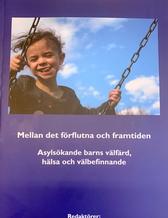
Hur påverkas barns hälsa och välbefinnande under och av asylprocessen? Vad betyder mest för att frigöra barnens eget handlingsutrymme och strävan efter att må bra? Vad uppfattar barn som viktigt för hälsa och välbefinnande?
Dessa frågor belyses med utgångspunkt i flervetenskapliga forskningsansatser i boken. Här förmedlas olika perspektiv på barns villkor under asylprocessen allt ifrån politiska ambitioner till barns egna initiativ för att må bra. Resultaten visar att Barnkonventionen har betydelse för att värna barnens väl men att både regelverket och praxis kan ha en negativ inverkan på välfärd och hälsa hos barn och föräldrar. Välbefinnande och hälsa är ett resultat av sociala samspel inom och runt familjen, där mottagningssystemet spelar en mycket viktig roll. Familjens välbefinnande är av central betydelse för barnen under hela asylprocessen och har sannolikt stor betydelse under lång tid. Flera bidrag i boken lyfter också fram skolans stora betydelse för barnen.
I bokens slutkapitel presenteras slutsatser och rekommendationer för hur olika delar i mottagningssystemet skulle kunna bidra till bättre villkor för barn och familjer under asylprocessen.
Boken finns för nedladdning här!
Cultural Identities, National Borders
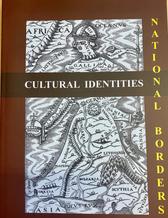
Eds. Mats Andrén, Thomas Lindkvist, Ingmar Söhrman, Katharina Vajta
Contemporary Europe spans a new landscape of cultural identities that eschews national borders and simple mapmaking. Migration and identity politics - as well as new awareness of linguistic and national identitites - are radically challenging the ideal of culturally homogeneous national states. Meanwhile, the ongoing process of integration is generating ta need to reach beyond cultural borders. Thus, understanding the cultural dimensions of constructing and reconstructing borders is of the utmost importance.
The fourteen scholars who appear in this book present their studies on this topic. The book features cases from seven countries, as well as chapters concerning the general questions about how to define a language and theoretical framework for the concept of national identity. The authours represent many different disciplines, including archaelogoy, economic history, film studies, geography, history, the history of ideas, linguistics, Romance lanuages and sociology.
A European Work-First Welfare State
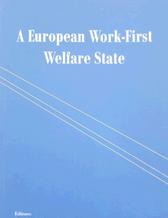
Eds. Sara Stendal, Thomas Erhag & Stamatia Devetzi
Work, and increased access to work for as many as possible, has become a modern mantra in welfare policies. It is the primacy of work, as the proposed key-aspect of welfare sustainability, which has created notions as work-first welfare. Since the 1980s, the issues of how to ensure that more individuals become self-supporting through wage labour has been high on the political agenda. Explanations for this development can be found in predictions of demographic shifts, in the breaking up of traditional family structures as well as an increasingly competitive global economy - all examples of processes which challenge the present distribution of social security in the different welfare regimes in Europe. It has become a main political concern to develop legal strategies that will increase the level of active labour market participation of the workforce. A European Work-First Welfare State provides a comparative account of how different welfare states and legal systems in Europe have responded to this challenge.
The Asylum-seeking Child in Europe
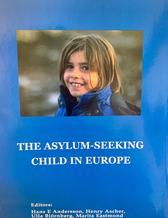
In contemporary society children constitute an important part of asylum seekers within and to Europe either they arrive with their families or alone. Many of these children have own experiences of war, violence, acts of cruelty and similar traumas. Others have been exposed indirectly by that their parents have had traumatising experiences. The problems of the adults are often very large and children run the risk of having their problems concealed. Registration and statistics are generally not made in a way that make the exposed situation of children visible. The reasons for asylum of children in their own right are rarely investigated.
The rights of asylum seeking children are protected in international conventions and rules, like in the UN Convention on the Rights of Children, The European Convention on Human Rights and the Geneva Convention. The rules within these conventions have to be tested against the policies of asylum that are practiced in different countries. The degree of protection of children vary within and between different countries. Within the framework of the discussions of the future of Europe within the EU issues connected to asylum rights are given a high priority. There are great differences between countries but the kinds of problems that have to be dealt with are similar. For this reason it is important to highlight the perspective of the child in order to protect the rights of children.
In this book knowledge from different scientific areas, like medicine, psychiatry, psychology, anthropology, sociology and pedagogic, and from different European countries presents international and interdisciplinary perspectives on the ways in which the situation of refugee children are understood and managed both during and after application of asylum.
Boken finns för nedladdning här!
Transition and EU-enlargement
Economic, legal, political and social change in Eastern Europe
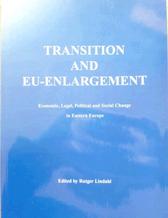
Ed. Rutger Lindahl
Enlargement of the European Union with a number of East European countries is a result of fundamental changes in the economic, legal, political and social environment in these countries. The process that has led to these changes has attracted the interest of scholars representing a multitude of academic disciplines. A broad spectrum of analytical perspectives have been used to help gain a better understanding of the transition process and serve as a base for political decisions regarding this or similar processes. A majority of the research projects are unidisciplinary in character and primarily focus on developments on the macro level. With reference to this, The Centre for European Research at Göteborg University asked a group of researchers who represent the fields of economics, economic geography, law, political science and sociology to design a multidisciplinary project that would open up for analyses of the transition process on the macro as well as on the micro level. The project was also, to a large extent to be based on empirical analyses, which would focus economic, legal and political reform activities and their consequences for the state, its institutions and citizens.
Recognizing the enormous amount of research on core aspects of transition, such as democratization and market liberalization, this project takes a somewhat different approach, aiming at bringing together, in one single volume, analyses of the consequences of political, economic and social change in Central and Eastern Europe from the different perspectives of the five disciplines involved. The wide array of transnational aspects covered in this volume will hopefully add to the empirical knowledge and to the further development of theories on transition.
Whither Europe?
Borders, Boundraies, Frontiers in a Changing World
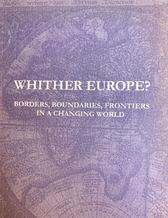
The existence during the Cold War period of a block-border, "the Iron Curtain" was of fundamental importance for political, economic, social and military development in Europe. When this border in 1989 lost its block-deviding role, a window of opportunity opened up for reorganizing relations between states, regions and peoples. As old borders lose their traditional importance, opportunities have appeared for the creation of new communities as well as for the disruption of old. Travel and trade patterns have changed rapidly. Processes like the enlargement of the European Union will cross old frontiers, but probably also result in new deviding lines between insiders and outsiders. Some of these deviding lines might take other forms than traditional state borders. Where should EU enlargement end? Should there be fixed and hard of flexible and soft borders? What constitutes an acceptable basis for European identity? Will there be an Atlantic front-line and a European "America Problem"? Russia and Turkey - insiders, associated partners or outsiders?
At Göteborg University researchers and students devote much time and energy to find answers to questions lika these. The Jean Monnet European Centre Excellence steering committee decided to further these efforts by organising an international pluridisciplinary conference. The conference "Whither Europe? Borders, Boundaries, Frontiers in a Changing World!, was held in Göteborg, Sweden, 16-17 January 2003. Plenary presentations and a selection of workshop papers are published in four volumes by Centre for European Research at Göteborg University (CERGU).
1. Whither Europe? Borders, Boundaries, Frontiers in a Changing World / Rutger Lindahl (ed)
2. Whither Europe? Migration, Citizenship and Identity / Mats Andrén (ed)
3. Whither Europe? Human Rights / Ulla Björnberg (ed)
4. Whither Europe? The Development of a New European Security Architecture / Per Cramér (ed)